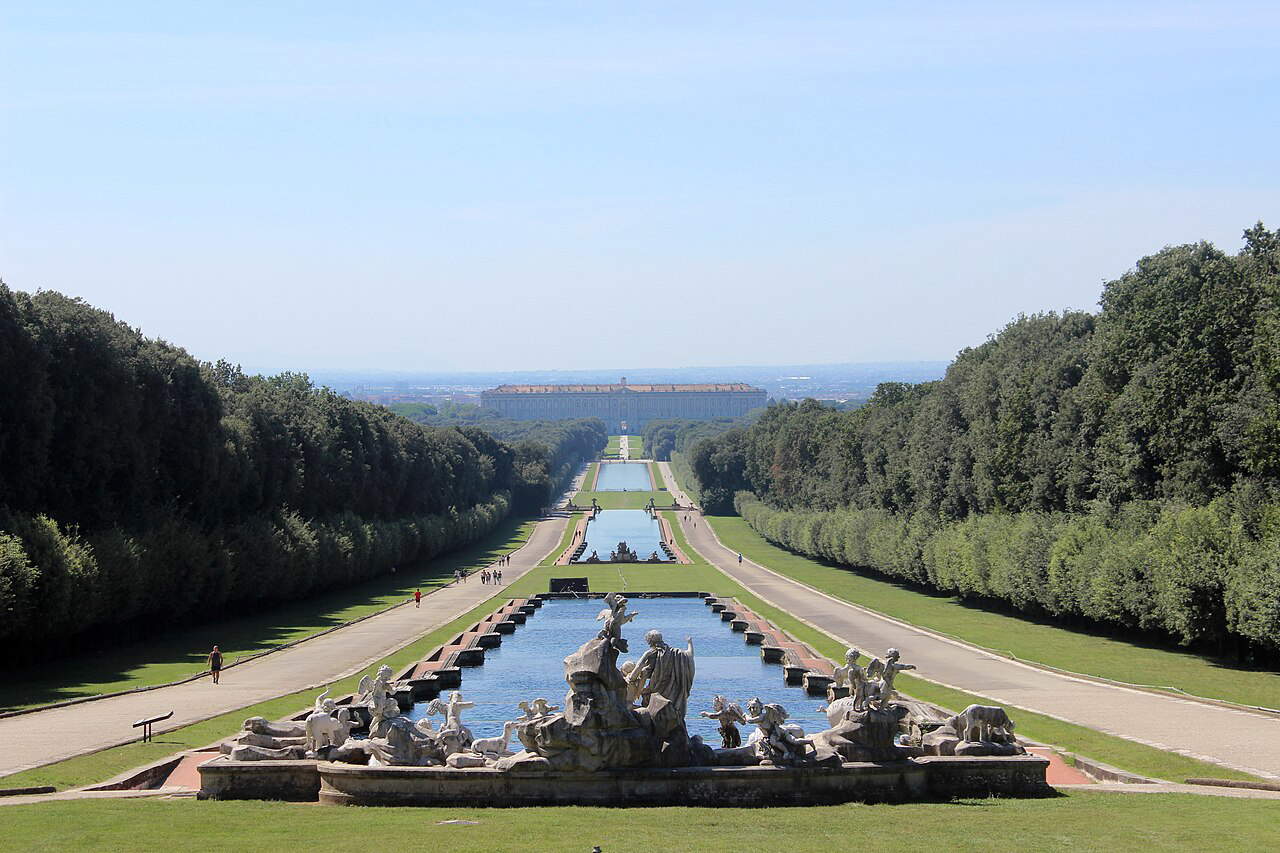The shadow of drastic intervention is stretching over the Royal Palace of Caserta, a Vanvitellian monument recognized as a UNESCO heritage site and a key resource for local tourism. All the attention is on the green heart of the park and in particular on the announced felling of hundreds of centuries-old holm oaks that make up the two central rows of the famous perspective originally designed by Luigi Vanvitelli. In fact, the replacement of the 750 trees has been discussed for two years: specifically, 645 are to be replaced while the other 105 that can be saved will be planted in other areas.
The project has generated widespread and widespread apprehension, so much so that it has been labeled by local committees as “Project Attila.” The director of the Royal Palace of Caserta, Tiziana Maffei, justified the intervention by claiming that the 750 trees were hopelessly damaged or diseased. This ambitious plan, which aims to replace the rows, would be covered and accelerated by funding obtained through the National Recovery and Resilience Plan (NRP). Indeed, the PNRR, under the investment “Programs to enhance the identity of places: historic parks and gardens,” promotes both the regeneration of historic parks and gardens and the training of specialized professionals. Moreover, the nature of NRP funds imposes a stringent urgency for the work to begin, in order not to miss the relevant funding window.
Despite the justification of advanced degradation, some independent investigations have questioned the scientific basis of the intervention, openly debunking the technical report on which the mass abatement is based. This is reported by the “August 31” Working Group, which was expressly formed to stop the felling of the holm oaks. A first study was conducted by the university consortium Benecon, chaired by Professor Carmine Gambardella, showed that only 6.9 percent of the holm oaks have a state of advanced degradation or high stress, considered to require felling. In contrast, most of the specimens are in excellent condition (77.8%) or in good health (15.3%). A second survey was carried out by agronomists and forestry technicians belonging to environmental associations, through a field reconnaissance authorized by the museum management itself. The technicians found, through ground checks and instrumental observations plant by plant, that the irreversibly diseased plants to be eliminated did not exceed a total of 10% of the total. These data point to a macroscopic difference from the general health condition of the holm oaks projected by the consultants hired by the DG, raising doubts about the very need for the felling of 750 trees. Again, agronomist Matteo Palmisani, president of the LIPU of Caserta, after viewing about a hundred trees, had stated that he did not detect extreme conditions in the plants examined.

The expected consequences of the intervention were judged to be very serious, both historically and environmentally. Caserta MP Gianpiero Zinzi, of the League, who intervened on the issue with a parliamentary question addressed to the minister of culture, urged the management of the Reggia to reconsider the decision, pointing out that the removal of these essences, which constitute the iconic image of the palace, without a precise restoration project, would lead to inevitable repercussions on the overall image and the environment.
Strong reservations were also raised at the institutional level. The Superintendence of Caserta and Benevento, while limiting itself to a “taking note” of the project, has expressed that it would result in the “loss of the historical and landscape values” that constitute the testimony of the art of the historic green, adding that the complete disruption of the Vanvitellian harmony would occur. To limit such loss, the Superintendent’s Office strongly recommended that any replacement should take place gradually and that the implementation of the project should be appropriately diluted over time.
Similarly, the technical-scientific committee of the Ministry of Culture (MiC), which was asked for an advisory opinion, while expressing a favorable opinion of the intervention in principle, duly emphasized the strong environmental impact of such a solution, however, suggesting a deferred implementation over a period of 18 months.
There is also the fact that the removal of hundreds of ancient trees would significantly affect air quality in a densely populated area of Caserta, adjacent to school complexes and the civil hospital.
During a study day devoted to the issue, the president of the Caserta Order of Agronomists and Foresters, Emilia Cangiano, also proposed the establishment of a technical consultation table. The fear, however, is that the need to meet NRP deadlines could lead to the felling of holm oaks in too short a time. The tension between the speed imposed by European calls for proposals and the slowness needed to protect a centuries-old historical heritage remains the central element in this controversy.
 |
| Royal Palace of Caserta, clash over felling of 750 holm oaks in the park |
Warning: the translation into English of the original Italian article was created using automatic tools. We undertake to review all articles, but we do not guarantee the total absence of inaccuracies in the translation due to the program. You can find the original by clicking on the ITA button. If you find any mistake,please contact us.